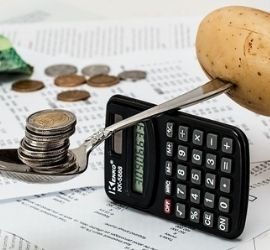Fullz – What Does It Mean?
 Fullz is a term in cyber theft meaning full or complete information. Criminals who steal credit card information use the word to refer to a comprehensive set of data on a potential fraud victim. A fullz information packet contains a person’s genuine name, address, and government pension identification like a Social Security number. Criminals purchase and sell fullz on the black market, often done online through the darknet. Buyers use this information to perpetrate credit card fraud, tax return fraud, medical identity theft, and other sorts of financial fraud or impersonation. Fullz is a component of third-party fraud since the individual whose credentials are sold is not complicit.
Fullz is a term in cyber theft meaning full or complete information. Criminals who steal credit card information use the word to refer to a comprehensive set of data on a potential fraud victim. A fullz information packet contains a person’s genuine name, address, and government pension identification like a Social Security number. Criminals purchase and sell fullz on the black market, often done online through the darknet. Buyers use this information to perpetrate credit card fraud, tax return fraud, medical identity theft, and other sorts of financial fraud or impersonation. Fullz is a component of third-party fraud since the individual whose credentials are sold is not complicit.
Fullz often includes a person’s name, address, SSN, driver’s license, bank account information, and medical data, among other things. The more personal information provided, the more valuable a fullz packet is to a thief. Identity thieves and fraudsters utilize the victim’s financial reputation to commit identity theft and fraud, resulting in bad credit ratings and financial instability for the victims. They may, for example, apply for a loan or credit card using the victim’s good credit. The fraudster applies for and uses the card, while the victim is unable to pay it off and/or seeks to cancel it, causing their credit score to suffer.
Fullz – A Closer Look
Fullz contains the victim’s complete name and billing address, as well as their credit card number, expiration date, and card security code, as well as their Social Security number and birth date. Criminals often offer fullz for up to $100 or more. Such profiles might command a premium for high-net-worth people. Researchers cite examples of crooks selling data for more much $450 during a study of the dark web. A partial set of customer data sells for far less. Fullz can be sold to a variety of purchasers several times. Criminals frequently gain complete information through hacking or data dumps.
If you were ever a victim of a company’s data breach, there may be a fullz with your data for sale on the Internet. Criminals also sell less complete data sets for specific purposes. For example, only enough credit card information to make fraudulent online purchases. A credit card’s magnetic strip data can be used to make counterfeit cards for fraudulent in-store purchases. And, a victim’s PayPal account information can be used to siphon funds from a victim’s account.
Fullz are regularly available for purchase in bulk on internet illegal marketplaces. These online illegal marketplaces are frequently concealed on the dark web behind TOR (The Onion Router) and I2P (Invisible Internet Project) routing. Transactions typically employ privacy-focused cryptocurrencies to conceal buyers’ and sellers’ identities.
Fullz from PayPal & eBay accounts
PayPal and eBay account records are in high demand on the underground market. PayPal is a frequent target for hackers due to its tremendous popularity. Also, the fact that its cash-out techniques are universal. This is opposed to financial institutions in different locations, which have distinct criteria. For many years, eBay accounts have facilitated auction fraud, which has been a favorite scam strategy. The cost of PayPal and eBay records in the underground economy varies by seller. They can be sold for as little as $2 per account. However, the value increases depending on whether or not the account has credit cards attached to it.
Fullz from Online gamer accounts
In specific underground forums, hackers target online games and gamers. Thieves profit by selling the victim’s character’s virtual gold and other distinctive virtual items for real-world money. Steam accounts (the most popular PC gaming shop) are also available on the black market. They may be used for cash-outs or merely to acquire access to games purchased by the victim.
What Drives the Cost of Personal Information on the Dark Web?
The cost of information bought and sold on the dark web is determined by four major factors:
- Data Type – Different types of information can be sold for different amounts of money. More complete data, like fullz, is more valuable to fraudsters and commands a higher value.
- Supply and demand – Economic principles of supply and demand apply to criminal activity. This includes buying and selling stolen information. If there is a limited amount of a certain type of information accessible for purchase, that information becomes more valuable to criminals.
- Monetary potential – The more that can be gained, the greater the cost of that stolen information. An account that can be easily accessed has value, whether in dollars or bonus points. High net worth individual accounts have more value than low or average individuals.
- Reusability – Fraudsters value items that have a larger limit or may be reused several times. Alternatively, information that has restrictions on how it may be used and can only be used once is less valuable. (Source: experian.com)
Fullz – Limiting the Damage
Consumers find it difficult to avoid becoming victims of identity theft. There is no alternative but to reveal personal information for anything from credit card applications to doctor’s visits. Once the data is given, consumers have little influence over what the service provider does with that information or how well the information is protected. However, there are simple actions that anybody can take to limit being an identity theft victim and having their personal and account information sold on the Internet.
It is critical to shred and destroy financial papers before disposing of them. Also, avoid making financial transactions through unsecured Internet connections, such as public Wi-Fi. Consumers should regularly monitor their bank and credit card accounts, as well as their credit reports. On a regular basis, look for indicators of fraudulent activity and try to stop it before it goes too far. Many of the top credit monitoring firms also provide identity protection tools and services for further security.
Consumers should do everything possible to make it difficult for fraudsters to exploit their information. Using a password manager, for example, enables customers to create complicated passwords. Also, avoid reusing them across sites—two characteristics of a good password that reduce the impact of a breach.
The Bottom Line
Cybercriminals are constantly on the hunt for new methods to profit from stolen credentials. Consumers frequently save sensitive personal information across several internet accounts. They do this without taking the extra precautions required to secure that information. As a result, fraudsters have a lot to work with. Fighting fraud, in general, is a difficult task. Plug one weakness, one exploit, and fraudsters will shift their attention to another. Unfortunately, the underground market will thrive as long as thieves continue to steal and profit from stolen data.
Credit cards are quite valuable on day one, but their worth rapidly declines as time passes. Fullz, on the other hand, have a longer shelf life and provide fraudsters with more areas to exploit and misuse the information. According to NuData, over 675 million data records have gone missing in the United States in the previous ten years. Either because hackers were able to breach firms’ security measures and raid their databases. Or, because a corporation simply misplaced them. A breach is only one component of the whole supply chain. When assembling those fullz, they provide the bad guys with a large pool of data to sift through. Usually, they check for data overlaps between breaches. This is to determine whether someone is using the same login name, password, or another identifier across many sites and services.
Up Next: What Is a C Note?
 The C note is an abbreviation for a $100 banknote in US currency. The “C” in C note alludes to the Roman numeral for 100. This upper-case C was printed on notes in the upper-left corner from 1869 to 1914. Also, C stands for a century which denotes a span of 100 years. The letter C also stands for “centum,” the Latin word for “one hundred.” The term note is derived from the bill itself. Printed directly on the US $100 bill is the phrase: “This note is legal currency for all debts, public and private.” The term C Note gained popularity in the 1920s and 1930s, and it was used in a number of gangster films.
The C note is an abbreviation for a $100 banknote in US currency. The “C” in C note alludes to the Roman numeral for 100. This upper-case C was printed on notes in the upper-left corner from 1869 to 1914. Also, C stands for a century which denotes a span of 100 years. The letter C also stands for “centum,” the Latin word for “one hundred.” The term note is derived from the bill itself. Printed directly on the US $100 bill is the phrase: “This note is legal currency for all debts, public and private.” The term C Note gained popularity in the 1920s and 1930s, and it was used in a number of gangster films.
The term C note is less commonly used in modern parlance and has been supplanted by a Benjamin. This term is derived from Benjamin Franklin, one of the United States’ founding fathers, whose face appears on the front of the $100 bill. Franklins, Bens, and Benjies are other colloquial terms for a US $100 note.




